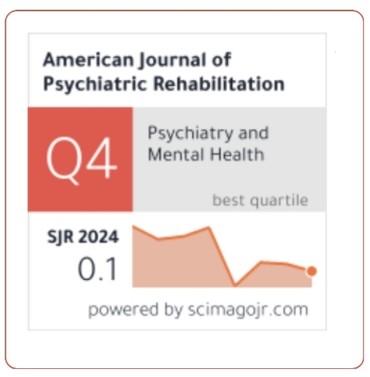Integrating Multi-Omics Data and AI For Early Detection And Personalized Treatment of Colorectal Cancer
DOI:
https://doi.org/10.69980/ajpr.v28i1.68Keywords:
Colorectal Cancer, Cancer Morbidity, Cancer Mortality, Preventable Causes, Gut Microbiota, Chronic Inflammation, Early Detection, Point-of-Care Tests, Immune Dysbiosis, Artificial Intelligence, Epigenetic Tests, Risk Biomaterials, Data Integration, Patient-Tailored Treatments, Disease Outcomes, Carbon Nanopipettes, Circuit Nanosensors, Innovative Diagnostics, CRC Monitoring, Intervention Success.Abstract
Colorectal cancer (CRC) is the fourth leading cause of cancer-related morbidity and mortality worldwide. More than half of the CRC cases are due to preventable causes. Aberrant gut microbiota has been found to play an important role in the early phase of CRC by causing chronic inflammation. However, this residual risk combined with the lack of patient-friendly methods can limit early detection, intervention success, and post-intervention monitoring. This creates an urgent need for additional innovative point-of-care tests that could distinguish early preclinical cancers from precancers, both of which could be associated with immune dysbiosis. Artificial intelligence (AI) tools are expected to assist with these challenges, as vehicles for these assays have come to the forefront, with promising results in other epigenetic tests. In this review, we focus on innovative colorectal cancer risk biomaterials to detect these early events, highlighting the potential of artificial intelligence (AI) to aid in data integration and develop better tools, ultimately leading to patient-tailored treatments for better colorectal cancer outcomes. As synergistic material platforms, carbon nanopipettes (CNPs) are then discussed, along with circuit nanosensors, with a focused discussion on early CRC disease detection.
References
[1] Polineni, T. N. S., & Seenu, A. (2025). The New Frontier of Healthcare and Industry: Subash’s Expertise in Big Data and Cloud Computing for Enhanced Operational Efficiency. Cuestiones de Fisioterapia, 54(2), 271-283.
[2] Maguluri, K. K., Ganti, V. K. A. T., Yasmeen, Z., & Pandugula, C. (2025, January). Progressive GAN Framework for Realistic Chest X-Ray Synthesis and Data Augmentation. In 2025 6th International Conference on Mobile Computing and Sustainable Informatics (ICMCSI) (pp. 755-760). IEEE.
[3] Koppolu, H. K. R. Deep Learning and Agentic AI for Automated Payment Fraud Detection: Enhancing Merchant Services Through Predictive Intelligence.
[4] Nampalli, R. C. R., & Adusupalli, B. (2024). AI-Driven Neural Networks for Real-Time Passenger Flow Optimization in High-Speed Rail Networks. Nanotechnology Perceptions, 334-348.
[5] Chakilam, C. (2022). Generative AI-Driven Frameworks for Streamlining Patient Education and Treatment Logistics in Complex Healthcare Ecosystems. Kurdish Studies. Green Publication. https://doi. org/10.53555/ks. v10i2, 3719.
[6] Sriram, H. K. (2023). Harnessing AI Neural Networks and Generative AI for Advanced Customer Engagement: Insights into Loyalty Programs, Marketing Automation, and Real-Time Analytics. Educational Administration: Theory and Practice, 29(4), 4361-4374.
[7] Burugulla, J. K. R. (2025). Enhancing Credit and Charge Card Risk Assessment Through Generative AI and Big Data Analytics: A Novel Approach to Fraud Detection and Consumer Spending Patterns. Cuestiones de Fisioterapia, 54(4), 964-972.
[8] Chava K. Dynamic Neural Architectures and AI-Augmented Platforms for Personalized Direct-to-Practitioner Healthcare Engagements. J Neonatal Surg [Internet]. 2025Feb.24 [cited 2025Mar.24];14(4S):501-10. Available from: https://www.jneonatalsurg.com/index.php/jns/article/view/1824
[9] Challa, K. (2024). Neural Networks in Inclusive Financial Systems: Generative AI for Bridging the Gap Between Technology and Socioeconomic Equity. MSW Management Journal, 34(2), 749-763.
[10] Sondinti, K., & Reddy, L. (2025). The Future of Customer Engagement in Retail Banking: Exploring the Potential of Augmented Reality and Immersive Technologies. Available at SSRN 5136025.
[11] Malempati, M., & Rani, P. S. Autonomous AI Ecosystems for Seamless Digital Transactions: Exploring Neural Network-Enhanced Predictive Payment Models.
[12] Pallav Kumar Kaulwar. (2023). Tax Optimization and Compliance in Global Business Operations: Analyzing the Challenges and Opportunities of International Taxation Policies and Transfer Pricing. International Journal of Finance (IJFIN) - ABDC Journal Quality List, 36(6), 150-181.
[13] Vankayalapati, R. K. (2025). Architectural foundations of hybrid cloud. The Synergy Between Public and Private Clouds in Hybrid Infrastructure Models: Real-World Case Studies and Best Practices, 17.
[14] Nuka, S. T. (2025). Leveraging AI and Generative AI for Medical Device Innovation: Enhancing Custom Product Development and Patient Specific Solutions. Journal of Neonatal Surgery, 14(4s).
[15] Rao Suura S. Agentic AI Systems in Organ Health Management: Early Detection of Rejection in Transplant Patients. J Neonatal Surg [Internet]. 2025Feb.24 [cited 2025Mar.24];14(4S):490-50.
[16] Kannan, S. (2025). Transforming Community Engagement with Generative AI: Harnessing Machine Learning and Neural Networks for Hunger Alleviation and Global Food Security. Cuestiones de Fisioterapia, 54(4), 953-963.
[17] Srinivas Kalisetty, D. A. S. Leveraging Artificial Intelligence and Machine Learning for Predictive Bid Analysis in Supply Chain Management: A Data-Driven Approach to Optimize Procurement Strategies.
[18] Challa, S. R. Diversification in Investment Portfolios: Evaluating the Performance of Mutual Funds, ETFs, and Fixed Income Securities in Volatile Markets.
[19] Vamsee Pamisetty. (2023). Intelligent Financial Governance: The Role of AI and Machine Learning in Enhancing Fiscal Impact Analysis and Budget Forecasting for Government Entities. Journal for ReAttach Therapy and Developmental Diversities, 6(10s(2), 1785–1796. https://doi.org/10.53555/jrtdd.v6i10s(2).3480
[20] Komaragiri, V. B. (2022). AI-Driven Maintenance Algorithms For Intelligent Network Systems: Leveraging Neural Networks To Predict And Optimize Performance In Dynamic Environments. Migration Letters, 19, 1949-1964.
[21] Annapareddy, V. N., & Rani, P. S. AI and ML Applications in RealTime Energy Monitoring and Optimization for Residential Solar Power Systems.
Downloads
Published
Issue
Section
License
Copyright (c) 2025 American Journal of Psychiatric Rehabilitation

This work is licensed under a Creative Commons Attribution 4.0 International License.
This is an Open Access article distributed under the terms of the Creative Commons Attribution 4.0 International License permitting all use, distribution, and reproduction in any medium, provided the work is properly cited.









